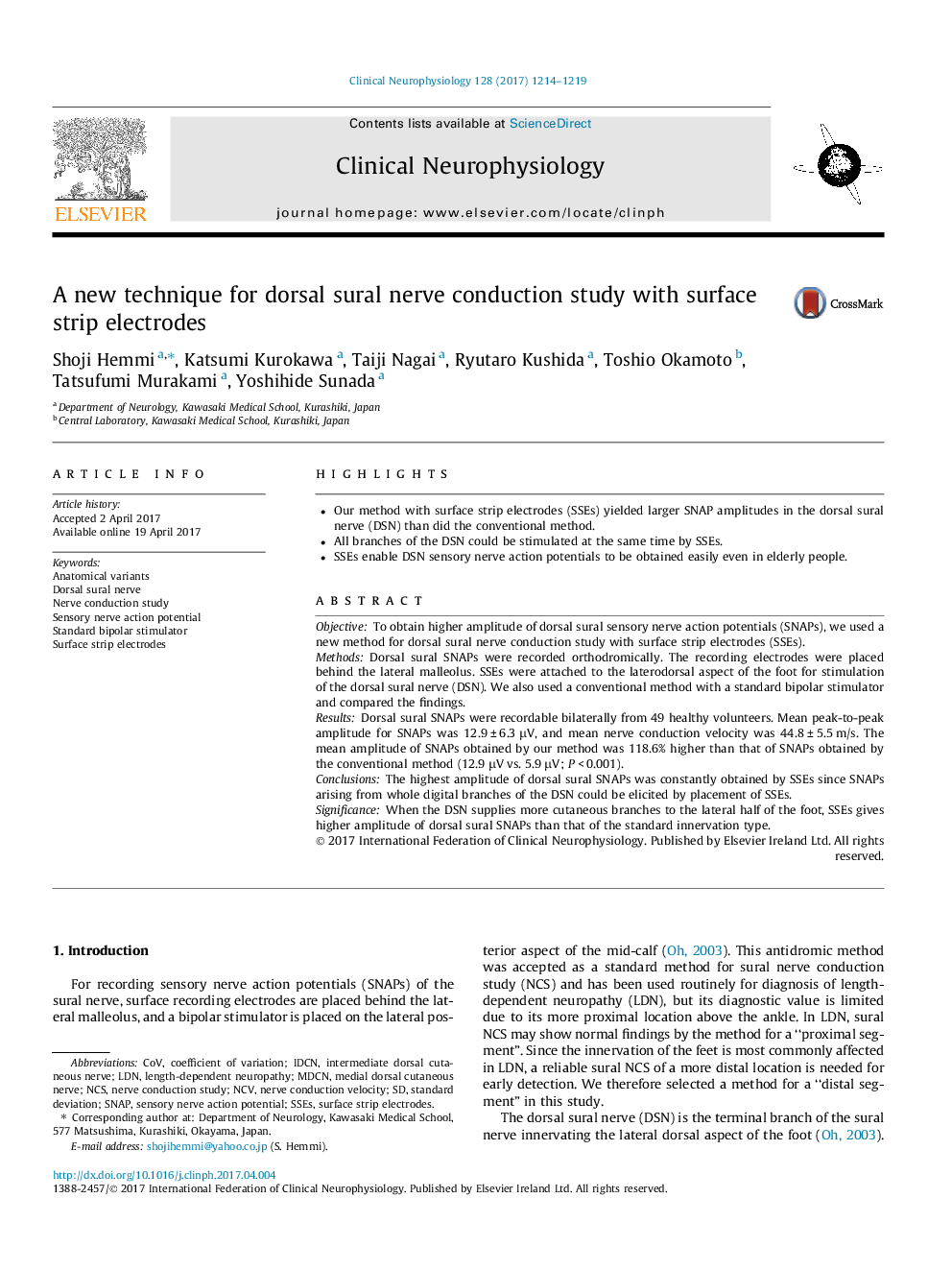| Article ID | Journal | Published Year | Pages | File Type |
|---|---|---|---|---|
| 5627849 | Clinical Neurophysiology | 2017 | 6 Pages |
â¢Our method with surface strip electrodes (SSEs) yielded larger SNAP amplitudes in the dorsal sural nerve (DSN) than did the conventional method.â¢All branches of the DSN could be stimulated at the same time by SSEs.â¢SSEs enable DSN sensory nerve action potentials to be obtained easily even in elderly people.
ObjectiveTo obtain higher amplitude of dorsal sural sensory nerve action potentials (SNAPs), we used a new method for dorsal sural nerve conduction study with surface strip electrodes (SSEs).MethodsDorsal sural SNAPs were recorded orthodromically. The recording electrodes were placed behind the lateral malleolus. SSEs were attached to the laterodorsal aspect of the foot for stimulation of the dorsal sural nerve (DSN). We also used a conventional method with a standard bipolar stimulator and compared the findings.ResultsDorsal sural SNAPs were recordable bilaterally from 49 healthy volunteers. Mean peak-to-peak amplitude for SNAPs was 12.9 ± 6.3 μV, and mean nerve conduction velocity was 44.8 ± 5.5 m/s. The mean amplitude of SNAPs obtained by our method was 118.6% higher than that of SNAPs obtained by the conventional method (12.9 μV vs. 5.9 μV; P < 0.001).ConclusionsThe highest amplitude of dorsal sural SNAPs was constantly obtained by SSEs since SNAPs arising from whole digital branches of the DSN could be elicited by placement of SSEs.SignificanceWhen the DSN supplies more cutaneous branches to the lateral half of the foot, SSEs gives higher amplitude of dorsal sural SNAPs than that of the standard innervation type.
